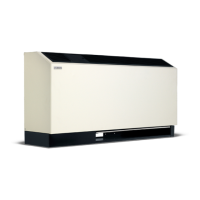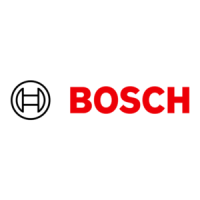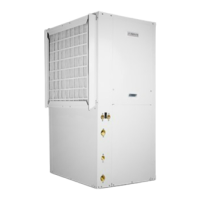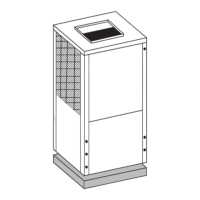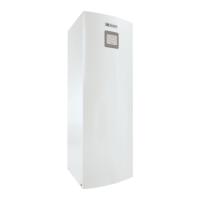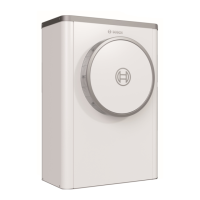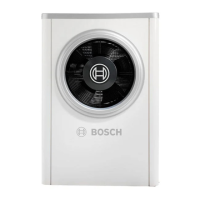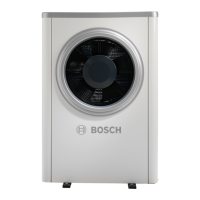How to check wiring connection in Bosch CL when compressor doesn't operate but fan runs?
- RrothhollySep 13, 2025
Look for signs of heat on the wiring insulation. Check that all wiring connections are secure and properly torqued.
How to check wiring connection in Bosch CL when compressor doesn't operate but fan runs?
Look for signs of heat on the wiring insulation. Check that all wiring connections are secure and properly torqued.
What to do if the compressor of my Bosch CL doesn't operate, but the fan runs and the water coil is scaled?
If the compressor isn't running but the fan is, and you suspect a high-pressure fault due to a fouled or scaled water coil, check for proper flow rate and water temperature. Look for a low-water-side temperature rise during cooling.
Why is the compressor not running but the fan is on my Bosch Heat Pump, and there's low airflow?
If the compressor isn't running but the fan is, and you suspect a high-pressure or low-pressure fault due to no or low air flow, check the fan motor for proper operation.
What to do if there is poor thermostat location for my Bosch Heat Pump?
Make sure that the thermostat is not located near a supply air duct.
How to check burned out compressor in Bosch CL when compressor doesn't operate but fan runs?
Does the compressor hum when power is applied? If not check the resistance of the compressor windings using the values shown in the compressor characteristics chart.
What to do if the compressor of my Bosch CL doesn't operate, but the fan runs and there is leaky duct work?
Inspect the duct work.
How to fix structure-bourne noise in Bosch Heat Pump?
Mount unit on vibration pad.
Why is the compressor not running, but the fan is on my Bosch CL Heat Pump, and there is a bad thermostat connection?
If the compressor isn't running but the fan is, and you suspect a brown out fault due to a bad thermostat connection, check the control voltage. If it's below 18V, check accessories connected to the unit and ensure they don't exceed the VA draw shown in Table 5 on page #21.
How to check loss of refrigeration capacity in Bosch CL when compressor doesn't operate but fan runs?
Check refrigerant pressures with a gauge set.
How to clean scaled or fouled water coil elevating heat pressure in Bosch Heat Pump?
Clean/descale water coil.
Covers critical safety instructions for installation, servicing, and handling of refrigerants.
Explains signal words, icons, and notices used for risk communication.
Details the structure and meaning of each character in the model number.
Overview of CL Series heat pumps, their applications, and certifications.
Specifies environmental, power, and operating limits for the units.
Lists compatible supplementary electric heater kits for various models.
Guidelines for moving, storing, initial inspection, and unpacking units.
Criteria for selecting a suitable indoor installation location.
Instructions for mounting vertical and horizontal units, including air orientation.
Details on connecting condensate drains, water piping, and duct systems.
Guidance on high-voltage, low-voltage wiring, and ECM interface board.
Configuring units for well water, cooling tower, and geothermal systems.
Ensuring proper water quality for heat pump operation and longevity.
Acceptable water characteristic values for copper and cupro-nickel heat exchangers.
Performing essential checks before energizing the unit and verifying compressor rotation.
Step-by-step guide for initiating unit operation in cooling and heating modes.
Recording system vitals and completing the checkout sheet.
Overview of the Unit Protection Module and its safety monitoring capabilities.
Explanation of fault codes, DIP switch settings, and operational logic.
Details on internal water valves, economizers, and hot gas reheat functionalities.
Information on boilerless heat control and the function of the option card.
Description and performance data for PSC, CT, and CA fan motor options.
Guidelines for filter changes, annual checkups, and drain cleaning.
Procedures for safe servicing, repairs, and handling of refrigerants.
Information on accessing electrical boxes and blower assemblies for service.
Guidelines for protecting the environment during decommissioning.
Steps for safe decommissioning and proper equipment labeling.
Guides for diagnosing and resolving common unit and option card issues.
Comprehensive tables for operating conditions, pressure drops, and dimensions.
Technical specifications for compressor winding resistance and capacitors.
Wiring diagrams for single-phase units with PSC, CT, and CA motors.
Wiring diagrams for three-phase units with PSC, CT, and CA motors.
Detailed dimensions and cabinet option sizes for vertical units.
Detailed dimensions and cabinet option sizes for horizontal units.
Required clearances for blower, compressor, and electrical access.
Glossary of common acronyms and technical terms used in the manual.
Template for recording unit nameplate and operating data during checkout.
General notes and disclaimers regarding product specifications and changes.
